Netty 服务端启动流程源码分析
前记
哈喽,自从上篇《Netty 之旅二:口口相传的高性能 Netty 到底是什么?》后,迟迟两周才开启今天的 Netty 源码系列。源码分析的第一篇文章,将由<吴小飞>分享 《Netty 服务端启动流程源码分析》,下一篇会由<王猛>分享客户端的启动过程源码分析。通过源码的阅读,我们将会知道,Netty 服务端启动的调用链是非常长的,同时肯定也会发现一些新的问题,随着我们源码阅读的不断深入,相信这些问题我们也会一一攻破。
废话不多说,直接上号!
一、从`EchoServer `示例入手
<div align="center", style="color:#A8A8A8;font-size:14px">netty-example:EchoServer</div>
示例从哪里来?任何开源框架都会有自己的示例代码,Netty 源码也不例外,如模块netty-example中就包括了最常见的EchoServer示例,下面通过这个示例进入服务端启动流程篇章。
public final class EchoServer {
static final boolean SSL = System.getProperty("ssl") != null; static final int PORT = Integer.parseInt(System.getProperty("port", "8007"));
public static void main(String[] args) throws Exception { // Configure SSL. final SslContext sslCtx; if (SSL) { SelfSignedCertificate ssc = new SelfSignedCertificate(); sslCtx = SslContextBuilder.forServer(ssc.certificate(), ssc.privateKey()).build(); } else { sslCtx = null; }
// 1. 声明Main-Sub Reactor模式线程池:EventLoopGroup // Configure the server. EventLoopGroup bossGroup = new NioEventLoopGroup(1); EventLoopGroup workerGroup = new NioEventLoopGroup(); // 创建 EchoServerHandler 对象 final EchoServerHandler serverHandler = new EchoServerHandler(); try { // 2. 声明服务端启动引导器,并设置相关属性 ServerBootstrap b = new ServerBootstrap(); b.group(bossGroup, workerGroup) .channel(NioServerSocketChannel.class) .option(ChannelOption.SO_BACKLOG, 100) .handler(new LoggingHandler(LogLevel.INFO)) .childHandler(new ChannelInitializer<SocketChannel>() { @Override public void initChannel(SocketChannel ch) throws Exception { ChannelPipeline p = ch.pipeline(); if (sslCtx != null) { p.addLast(sslCtx.newHandler(ch.alloc())); } //p.addLast(new LoggingHandler(LogLevel.INFO)); p.addLast(serverHandler); } });
// 3. 绑定端口即启动服务端,并同步等待 // Start the server. ChannelFuture f = b.bind(PORT).sync();
// 4. 监听服务端关闭,并阻塞等待 // Wait until the server socket is closed. f.channel().closeFuture().sync(); } finally { // 5. 优雅地关闭两个EventLoopGroup线程池 // Shut down all event loops to terminate all threads. bossGroup.shutdownGracefully(); workerGroup.shutdownGracefully(); } }}
复制代码
[代码行 18、19]声明 Main-Sub Reactor 模式线程池:EventLoopGroup
创建两个 EventLoopGroup 对象。其中,bossGroup用于服务端接受客户端的连接,workerGroup用于进行客户端的 SocketChannel 的数据读写。
(<u>关于EventLoopGroup不是本文重点所以在后续文章中进行分析</u>)
[代码行 23-39]声明服务端启动引导器,并设置相关属性
AbstractBootstrap是一个帮助类,通过方法链(method chaining)的方式,提供了一个简单易用的方式来配置启动一个Channel。io.netty.bootstrap.ServerBootstrap ,实现 AbstractBootstrap 抽象类,用于 Server 的启动器实现类。io.netty.bootstrap.Bootstrap ,实现 AbstractBootstrap 抽象类,用于 Client 的启动器实现类。如下类图所示:
[
](https://imgchr.com/i/wwvVKA)
<div align="center", style="color:#A8A8A8;font-size:14px">AbstractBootstrap 类继承</div>
(<u>在EchoServer示例代码中,我们看到 ServerBootstrap 的 group、channel、option、childHandler 等属性链式设置都放到关于AbstractBootstrap体系代码中详细介绍。</u>)
[代码行 43]绑定端口即启动服务端,并同步等待
先调用 #bind(int port) 方法,绑定端口,后调用 ChannelFuture#sync() 方法,阻塞等待成功。对于bind操作就是本文要详细介绍的"服务端启动流程"。
[代码行 47]监听服务端关闭,并阻塞等待
先调用 #closeFuture() 方法,监听服务器关闭,后调用 ChannelFuture#sync() 方法,阻塞等待成功。 注意,此处不是关闭服务器,而是channel的监听关闭。
[代码行 51、52]优雅地关闭两个EventLoopGroup线程池
finally代码块中执行说明服务端将最终关闭,所以调用 EventLoopGroup#shutdownGracefully() 方法,分别关闭两个 EventLoopGroup 对象,终止所有线程。
二、服务启动过程
在服务启动过程的源码分析之前,这里回顾一下我们在通过JDK NIO编程在服务端启动初始的代码:
serverSocketChannel = ServerSocketChannel.open(); serverSocketChannel.configureBlocking(false); serverSocketChannel.socket().bind(new InetSocketAddress(port), 1024); selector = Selector.open(); serverSocketChannel.register(selector, SelectionKey.OP_ACCEPT);
复制代码
这 5 行代码标示一个最为熟悉的过程:
后面等分析完 Netty 的启动过程后,会对这些步骤有一个新的认识。在EchoServer示例中,进入 #bind(int port) 方法,AbstractBootstrap#bind()其实有多个方法,方便不同地址参数的传递,实际调用的方法是AbstractBootstrap#doBind(final SocketAddress localAddress) 方法,代码如下:
private ChannelFuture doBind(final SocketAddress localAddress) { final ChannelFuture regFuture = initAndRegister(); final Channel channel = regFuture.channel(); if (regFuture.cause() != null) { return regFuture; }
if (regFuture.isDone()) { // At this point we know that the registration was complete and successful. ChannelPromise promise = channel.newPromise(); doBind0(regFuture, channel, localAddress, promise); return promise; } else { // Registration future is almost always fulfilled already, but just in case it's not. final PendingRegistrationPromise promise = new PendingRegistrationPromise(channel); regFuture.addListener(new ChannelFutureListener() { @Override public void operationComplete(ChannelFuture future) throws Exception { Throwable cause = future.cause(); if (cause != null) { // Registration on the EventLoop failed so fail the ChannelPromise directly to not cause an // IllegalStateException once we try to access the EventLoop of the Channel. promise.setFailure(cause); } else { // Registration was successful, so set the correct executor to use. // See https://github.com/netty/netty/issues/2586 promise.registered();
doBind0(regFuture, channel, localAddress, promise); } } }); return promise; }}
复制代码
[代码行 2] :调用 #initAndRegister() 方法,初始化并注册一个 Channel 对象。因为注册是异步的过程,所以返回一个 ChannelFuture 对象。详细解析,见 「initAndRegister()」。
[代码行 4-6]]:若发生异常,直接进行返回。
[代码行 9-34]:因为注册是异步的过程,有可能已完成,有可能未完成。所以实现代码分成了【第 10 至 14 行】和【第 15 至 36 行】分别处理已完成和未完成的情况。
- 核心在[第 11 、29 行],调用 #doBind0(final ChannelFuture regFuture, final Channel channel, final SocketAddress localAddress, final ChannelPromise promise) 方法,绑定 Channel 的端口,并注册 Channel 到 SelectionKey 中。
- 如果异步注册对应的 ChanelFuture 未完成,则调用 ChannelFuture#addListener(ChannelFutureListener) 方法,添加监听器,在注册完成后,进行回调执行 #doBind0(...) 方法的逻辑。
通过doBind方法可以知道服务端启动流程大致如下几个步骤:
[
](https://imgchr.com/i/wwvl8g)
<div align="center", style="color:#A8A8A8;font-size:14px">服务端启动流程</div>
1. 创建 Channel
<div align="center", style="color:#A8A8A8;font-size:14px">创建服务端 channel</div>
从#doBind(final SocketAddress localAddress)进入到initAndRegister():
final ChannelFuture initAndRegister() { Channel channel = null; try { channel = channelFactory.newChannel(); init(channel); } catch (Throwable t) { if (channel != null) { // channel can be null if newChannel crashed (eg SocketException("too many open files")) channel.unsafe().closeForcibly(); // as the Channel is not registered yet we need to force the usage of the GlobalEventExecutor return new DefaultChannelPromise(channel, GlobalEventExecutor.INSTANCE).setFailure(t); } // as the Channel is not registered yet we need to force the usage of the GlobalEventExecutor return new DefaultChannelPromise(new FailedChannel(), GlobalEventExecutor.INSTANCE).setFailure(t); }
ChannelFuture regFuture = config().group().register(channel); if (regFuture.cause() != null) { if (channel.isRegistered()) { channel.close(); } else { channel.unsafe().closeForcibly(); } }
// If we are here and the promise is not failed, it's one of the following cases: // 1) If we attempted registration from the event loop, the registration has been completed at this point. // i.e. It's safe to attempt bind() or connect() now because the channel has been registered. // 2) If we attempted registration from the other thread, the registration request has been successfully // added to the event loop's task queue for later execution. // i.e. It's safe to attempt bind() or connect() now: // because bind() or connect() will be executed *after* the scheduled registration task is executed // because register(), bind(), and connect() are all bound to the same thread.
return regFuture;}
复制代码
[代码行 4]调用 ChannelFactory#newChannel() 方法,创建 Channel 对象。 ChannelFactory类继承如下:
<div align="center", style="color:#A8A8A8;font-size:14px">ChannelFactroy 类继承</div>
可以在ChannelFactory注释看到@deprecated Use {@link io.netty.channel.ChannelFactory} instead.,这里只是包名的调整,对于继承结构不变。netty默认使用ReflectiveChannelFactory,我们可以看到重载方法:
@Overridepublic T newChannel() { try { return constructor.newInstance(); } catch (Throwable t) { throw new ChannelException("Unable to create Channel from class " + constructor.getDeclaringClass(), t); }}
复制代码
很明显,正如其名是通过反射机制构造Channel对象实例的。constructor是在其构造方法初始化的:this.constructor = clazz.getConstructor();这个clazz按理说应该是我们要创建的Channel的 Class 对象。那Class对象是什么呢?我们接着看channelFactory是怎么初始化的。
首先在AbstractBootstrap找到如下代码:
@Deprecatedpublic B channelFactory(ChannelFactory<? extends C> channelFactory) { ObjectUtil.checkNotNull(channelFactory, "channelFactory"); if (this.channelFactory != null) { throw new IllegalStateException("channelFactory set already"); }
this.channelFactory = channelFactory; return self();}
复制代码
调用这个方法的递推向上看到:
public B channel(Class<? extends C> channelClass) { return channelFactory(new ReflectiveChannelFactory<C>( ObjectUtil.checkNotNull(channelClass, "channelClass") ));}
复制代码
这个方法正是在EchoServer中ServerBootstrap链式设置时调用.channel(NioServerSocketChannel.class)的方法。我们看到,channelClass就是NioServerSocketChannel.class,channelFactory也是以ReflectiveChannelFactory作为具体实例,并且将NioServerSocketChannel.class作为构造参数传递初始化的,所以这回答了反射机制构造的是io.netty.channel.socket.nio.NioServerSocketChannel对象。
继续看NioServerSocketChannel构造方法逻辑做了什么事情,看之前先给出NioServerSocketChannel类继承关系:
<div align="center", style="color:#A8A8A8;font-size:14px">Channel 类继承</div>
NioServerSocketChannel与NioSocketChannel分别对应服务端和客户端,公共父类都是AbstractNioChannel和AbstractChannel,下面介绍创建过程可以参照这个Channel类继承图。进入NioServerSocketChannel构造方法:
/** * Create a new instance */public NioServerSocketChannel() { this(newSocket(DEFAULT_SELECTOR_PROVIDER));}
复制代码
点击newSocket进去:
private static ServerSocketChannel newSocket(SelectorProvider provider) { try { /** * Use the {@link SelectorProvider} to open {@link SocketChannel} and so remove condition in * {@link SelectorProvider#provider()} which is called by each ServerSocketChannel.open() otherwise. * * See <a href="https://github.com/netty/netty/issues/2308">#2308</a>. */ return provider.openServerSocketChannel(); } catch (IOException e) { throw new ChannelException( "Failed to open a server socket.", e); }}
复制代码
以上传进来的provider是DEFAULT_SELECTOR_PROVIDER即默认的java.nio.channels.spi.SelectorProvider,[代码行 9]就是熟悉的jdk nio创建ServerSocketChannel。这样newSocket(DEFAULT_SELECTOR_PROVIDER)就返回了结果ServerSocketChannel,回到NioServerSocketChannel()#this()点进去:
/** * Create a new instance using the given {@link ServerSocketChannel}. */public NioServerSocketChannel(ServerSocketChannel channel) { super(null, channel, SelectionKey.OP_ACCEPT); config = new NioServerSocketChannelConfig(this, javaChannel().socket());}
复制代码
以上super代表父类AbstractNioMessageChannel构造方法,点进去看到:
/** * @see AbstractNioChannel#AbstractNioChannel(Channel, SelectableChannel, int) */protected AbstractNioMessageChannel(Channel parent, SelectableChannel ch, int readInterestOp) { super(parent, ch, readInterestOp);}
复制代码
以上super代表父类AbstractNioChannel构造方法,点进去看到:
protected AbstractNioChannel(Channel parent, SelectableChannel ch, int readInterestOp) { super(parent); this.ch = ch; this.readInterestOp = readInterestOp; try { ch.configureBlocking(false); } catch (IOException e) { try { ch.close(); } catch (IOException e2) { if (logger.isWarnEnabled()) { logger.warn("Failed to close a partially initialized socket.", e2); } }
throw new ChannelException("Failed to enter non-blocking mode.", e); }}
复制代码
以上[代码行 3]将ServerSocketChannel保存到了AbstractNioChannel#ch成员变量,在上面提到的NioServerSocketChannel构造方法的[代码行 6]javaChannel()拿到的就是ch保存的ServerSocketChannel变量。
以上[代码行 6]就是熟悉的jdk nio编程设置ServerSocketChannel非阻塞方式。这里还有super父类构造方法,点击进去看到:
protected AbstractChannel(Channel parent) { this.parent = parent; id = newId(); unsafe = newUnsafe(); pipeline = newChannelPipeline();}
复制代码
以上构造方法中:
parent 属性,代表父 Channel 对象。对于 NioServerSocketChannel 的 parent 为null。
id 属性,Channel 编号对象。在构造方法中,通过调用 #newId() 方法进行创建。(<u>这里不细展开 Problem-1</u>)
unsafe 属性,Unsafe 对象。因为Channel 真正的具体操作,是通过调用对应的 Unsafe 对象实施。所以需要在构造方法中,通过调用 #newUnsafe() 方法进行创建。这里的 Unsafe 并不是我们常说的 jdk自带的sun.misc.Unsafe ,而是 io.netty.channel.Channel#Unsafe。(<u>这里不细展开 Problem-2</u>)
pipeline属性默认是DefaultChannelPipeline对象,赋值后在后面为 channel 绑定端口的时候会用到
通过以上创建channel源码过程分析,总结的流程时序图如下:
2. 初始化 Channel
<div align="center", style="color:#A8A8A8;font-size:14px">初始化 channel</div>
回到一开始创建Channel的initAndRegister()入口方法,在创建Channel后紧接着init(channel)进入初始化流程,因为是服务端初始化,所以是ServerBootstrap#init(Channel channel),代码如下:
@Overridevoid init(Channel channel) throws Exception { final Map<ChannelOption<?>, Object> options = options0(); synchronized (options) { setChannelOptions(channel, options, logger); }
final Map<AttributeKey<?>, Object> attrs = attrs0(); synchronized (attrs) { for (Entry<AttributeKey<?>, Object> e: attrs.entrySet()) { @SuppressWarnings("unchecked") AttributeKey<Object> key = (AttributeKey<Object>) e.getKey(); channel.attr(key).set(e.getValue()); } }
ChannelPipeline p = channel.pipeline();
final EventLoopGroup currentChildGroup = childGroup; final ChannelHandler currentChildHandler = childHandler; final Entry<ChannelOption<?>, Object>[] currentChildOptions; final Entry<AttributeKey<?>, Object>[] currentChildAttrs; synchronized (childOptions) { currentChildOptions = childOptions.entrySet().toArray(newOptionArray(0)); } synchronized (childAttrs) { currentChildAttrs = childAttrs.entrySet().toArray(newAttrArray(0)); }
p.addLast(new ChannelInitializer<Channel>() { @Override public void initChannel(final Channel ch) throws Exception { final ChannelPipeline pipeline = ch.pipeline(); ChannelHandler handler = config.handler(); if (handler != null) { pipeline.addLast(handler); }
ch.eventLoop().execute(new Runnable() { @Override public void run() { pipeline.addLast(new ServerBootstrapAcceptor( ch, currentChildGroup, currentChildHandler, currentChildOptions, currentChildAttrs)); } }); } });}
复制代码
[代码 3 - 6 行]: options0()方法返回的options保存了用户在EchoServer中设置自定义的可选项集合,这样ServerBootstrap将配置的选项集合,设置到了 Channel 的可选项集合中。
[代码 8 - 15 行]: attrs0()方法返回的attrs保存了用户在EchoServer中设置自定义的属性集合,这样ServerBootstrap将配置的属性集合,设置到了 Channel 的属性集合中。
[代码 21-28 行]:通过局部变量currentChildOptions和currentChildAttrs保存了用户自定义的childOptions和childAttrs,用于[代码 43 行] ServerBootstrapAcceptor 构造方法。
[代码 30-47]]:创建ChannelInitializer 对象,添加到 pipeline 中,用于后续初始化 ChannelHandler 到 pipeline 中,包括用户在EchoServer配置的LoggingHandler和创建的创建 ServerBootstrapAcceptor 对象。
- [代码行 34-37]:添加启动器配置的 LoggingHandler到pipeline 中。
- [代码行 39-45]:创建 ServerBootstrapAcceptor 对象,添加到 pipeline 中。从名字上就可以看出来,ServerBootstrapAcceptor 也是一个 ChannelHandler 实现类,专门用于接受客户端的新连接请求,把新的请求扔给某个事件循环器,我们先不做过多分析。我们发现是使用EventLoop.execute 执行添加的过程,这是为什么呢?同样记录问题(<u>Problem-</u>3)
- 需要说明的是pipeline 在之前介绍 Netty 核心组件的时候提到是一个包含ChannelHandlerContext的双向链表,每一个context对于唯一一个ChannelHandler,这里初始化后,ChannelPipeline里就是如下一个结构:
<div align="center", style="color:#A8A8A8;font-size:14px">ChannelPipeline 内部结构</div>
3. 注册 Channel
<img src="https://s1.ax1x.com/2020/09/13/wwvXi8.png" alt="wwvXi8.png" style="zoom:80%;" />
<div align="center", style="color:#A8A8A8;font-size:14px">注册 channel</div>
初始化Channel一些基本配置和属性完毕后,回到一开始创建Channel的initAndRegister()入口方法,在初始化Channel后紧接着[代码行 17] ChannelFuture regFuture = config().group().register(channel);明显这里是通过EventLoopGroup进入注册流程(EventLoopGroup体系将在后续文章讲解)
在EchoServer中启动器同样通过ServerBootstrap#group()设置了NioEventLoopGroup,它继承自MultithreadEventLoopGroup,所以注册流程会进入MultithreadEventLoopGroup重载的register(Channel channel)方法,代码如下:
@Overridepublic ChannelFuture register(Channel channel) { return next().register(channel);}
复制代码
这里会调用 next() 方法选择出来一个 EventLoop 来注册 Channel,里面实际上使用的是一个叫做 EventExecutorChooser 的东西来选择,它实际上又有两种实现方式 ——PowerOfTwoEventExecutorChooser 和 GenericEventExecutorChooser,本质上就是从 EventExecutor 数组中选择一个 EventExecutor,我们这里就是 NioEventLoop,那么,它们有什么区别呢?(<u>Problem-4:在介绍EventLoopGroup体系的后续文章中将会详细讲解,这里简单地提一下,本质都是按数组长度取余数 ,不过,2 的 N 次方的形式更高效。</u>)
接着,来到 NioEventLoop 的 register(channel) 方法,你会不会问找不到该方法?提示NioEventLoop 继承SingleThreadEventLoop,所以父类方法:
@Overridepublic ChannelFuture register(Channel channel) { return register(new DefaultChannelPromise(channel, this));}
@Overridepublic ChannelFuture register(final ChannelPromise promise) { ObjectUtil.checkNotNull(promise, "promise"); promise.channel().unsafe().register(this, promise); return promise;}
复制代码
可以看到,先创建了一个叫做 ChannelPromise 的东西,它是 ChannelFuture 的子类。[代码行 9]又调回了 Channel 的 Unsafe 的 register () 方法,这里第一个参数是 this,也就是 NioEventLoop,第二个参数是刚创建的 ChannelPromise。
点击 AbstractUnsafe#register(EventLoop eventLoop, final ChannelPromise promise) 方法进去,代码如下:
public final void register(EventLoop eventLoop, final ChannelPromise promise) { if (eventLoop == null) { throw new NullPointerException("eventLoop"); } if (isRegistered()) { promise.setFailure(new IllegalStateException("registered to an event loop already")); return; } if (!isCompatible(eventLoop)) { promise.setFailure( new IllegalStateException("incompatible event loop type: " + eventLoop.getClass().getName())); return; }
AbstractChannel.this.eventLoop = eventLoop;
if (eventLoop.inEventLoop()) { register0(promise); } else { try { eventLoop.execute(new Runnable() { @Override public void run() { register0(promise); } }); } catch (Throwable t) { logger.warn( "Force-closing a channel whose registration task was not accepted by an event loop: {}", AbstractChannel.this, t); closeForcibly(); closeFuture.setClosed(); safeSetFailure(promise, t); } }}
复制代码
[代码行 15]这行代码是设置 Channel 的 eventLoop 属性。这行前面的代码主要是在校验传入的 eventLoop 参数非空,校验是否有注册过以及校验 Channel 和 eventLoop 类型是否匹配。
[代码 18、24]接着,跟踪到 AbstractUnsafe#register0(ChannelPromise promise) 方法中:
private void register0(ChannelPromise promise) { try { // check if the channel is still open as it could be closed in the mean time when the register // call was outside of the eventLoop if (!promise.setUncancellable() || !ensureOpen(promise)) { return; } boolean firstRegistration = neverRegistered; doRegister(); neverRegistered = false; registered = true;
// Ensure we call handlerAdded(...) before we actually notify the promise. This is needed as the // user may already fire events through the pipeline in the ChannelFutureListener. pipeline.invokeHandlerAddedIfNeeded();
safeSetSuccess(promise); pipeline.fireChannelRegistered(); // Only fire a channelActive if the channel has never been registered. This prevents firing // multiple channel actives if the channel is deregistered and re-registered. if (isActive()) { if (firstRegistration) { pipeline.fireChannelActive(); } else if (config().isAutoRead()) { // This channel was registered before and autoRead() is set. This means we need to begin read // again so that we process inbound data. // // See https://github.com/netty/netty/issues/4805 beginRead(); } } } catch (Throwable t) { // Close the channel directly to avoid FD leak. closeForcibly(); closeFuture.setClosed(); safeSetFailure(promise, t); }}
复制代码
[代码行 9]进入 AbstractNioChannel#doRegister() 方法:
protected void doRegister() throws Exception { boolean selected = false; for (;;) { try { selectionKey = javaChannel().register(eventLoop().unwrappedSelector(), 0, this); return; } catch (CancelledKeyException e) { if (!selected) { // Force the Selector to select now as the "canceled" SelectionKey may still be // cached and not removed because no Select.select(..) operation was called yet. eventLoop().selectNow(); selected = true; } else { // We forced a select operation on the selector before but the SelectionKey is still cached // for whatever reason. JDK bug ? throw e; } } }}
复制代码
[代码行 5]关键一行代码,将 Java 原生 NIO Selector 与 Java 原生 NIO 的 Channel 对象(ServerSocketChannel) 绑定在一起,并将当前 Netty 的 Channel 通过 attachment 的形式绑定到 SelectionKey 上:
调用 #unwrappedSelector() 方法,返回 Java 原生 NIO Selector 对象,而且每个 NioEventLoop 与 Selector 唯一一对应。
调用 SelectableChannel#register(Selector sel, int ops, Object att) 方法,注册 Java 原生NIO 的 Channel 对象到 NIO Selector 对象上。
通过以上注册 channel 源码分析,总结流程的时序图如下:
4. 绑定端口
<div align="center", style="color:#A8A8A8;font-size:14px">绑定端口</div>
注册完Channel最后回到AbstractBootstrap#doBind() 方法,分析 Channel 的端口绑定逻辑。进入doBind0代码如下:
private static void doBind0( final ChannelFuture regFuture, final Channel channel, final SocketAddress localAddress, final ChannelPromise promise) {
// This method is invoked before channelRegistered() is triggered. Give user handlers a chance to set up // the pipeline in its channelRegistered() implementation. channel.eventLoop().execute(new Runnable() { @Override public void run() { if (regFuture.isSuccess()) { channel.bind(localAddress, promise).addListener(ChannelFutureListener.CLOSE_ON_FAILURE); } else { promise.setFailure(regFuture.cause()); } } });}
复制代码
[代码行 7]:在前面Channel 注册成功的条件下,调用 EventLoop执行 Channel 的端口绑定逻辑。但是,实际上当前线程已经是 EventLoop所在的线程了,为何还要这样操作呢?答案在【第 5 至 6 行】的英语注释,这里作为一个问题记着(<u>Problem-5</u>)。
[代码行 11]:进入AbstractChannel#bind(SocketAddress localAddress, ChannelPromise promise),同样立即异步返回并添加ChannelFutureListener.CLOSE_ON_FAILURE监听事件。
[代码行 13]:如果绑定端口之前的操作并没有成功,自然也就不能进行端口绑定操作了,通过 promise 记录异常原因。
AbstractChannel#bind(SocketAddress localAddress, ChannelPromise promise)方法如下:
public ChannelFuture bind(SocketAddress localAddress, ChannelPromise promise) { return pipeline.bind(localAddress, promise); }
复制代码
pipeline是之前创建channel的时候创建的DefaultChannelPipeline,进入该方法:
public final ChannelFuture bind(SocketAddress localAddress, ChannelPromise promise) { return tail.bind(localAddress, promise); }
复制代码
[在分析初始化流程的时候最后画一个DefaultChannelPipeline内部的结构,能够便于分析后面进入DefaultChannelPipeline一系列bind方法。]
首先,tail代表TailContext,进入AbstractChannelHandlerContext# bind(final SocketAddress localAddress, final ChannelPromise promise)方法:
public ChannelFuture bind(final SocketAddress localAddress, final ChannelPromise promise) { //省略部分代码 final AbstractChannelHandlerContext next = findContextOutbound(MASK_BIND); EventExecutor executor = next.executor(); if (executor.inEventLoop()) { next.invokeBind(localAddress, promise); } else { safeExecute(executor, new Runnable() { @Override public void run() { next.invokeBind(localAddress, promise); } }, promise, null); } return promise;}
复制代码
[代码行 3]:findContextOutbound方法里主要是执行ctx = ctx.prev;那么得到的next就是绑定LoggingHandler的context
[代码行 6]:进入invokeBind(localAddress, promise)方法并直接执行LoggingHandler#bind(this, localAddress, promise),进入后的方法如下:
public void bind(ChannelHandlerContext ctx, SocketAddress localAddress, ChannelPromise promise) throws Exception { if (logger.isEnabled(internalLevel)) { logger.log(internalLevel, format(ctx, "BIND", localAddress)); } ctx.bind(localAddress, promise); }
复制代码
设置了LoggingHandler的日志基本级别为默认的 INFO 后,进行绑定操作的信息打印。接着,继续循环到AbstractChannelHandlerContext# bind(final SocketAddress localAddress, final ChannelPromise promise)方法执行ctx = ctx.prev取出HeadContext进入到 bind 方法:
public void bind(ChannelHandlerContext ctx, SocketAddress localAddress, ChannelPromise promise) { unsafe.bind(localAddress, promise); }
复制代码
兜兜转转,最终跳出了pipeline轮回到AbstractUnsafe#bind(final SocketAddress localAddress, final ChannelPromise promise) 方法,Channel 的端口绑定逻辑。代码如下:
public final void bind(final SocketAddress localAddress, final ChannelPromise promise) { //此处有省略... boolean wasActive = isActive(); try { doBind(localAddress); } catch (Throwable t) { safeSetFailure(promise, t); closeIfClosed(); return; } //此处有省略...}
复制代码
做实事方法doBind进入后如下:
@Overrideprotected void doBind(SocketAddress localAddress) throws Exception { if (PlatformDependent.javaVersion() >= 7) { javaChannel().bind(localAddress, config.getBacklog()); } else { javaChannel().socket().bind(localAddress, config.getBacklog()); }}
复制代码
到了此处,服务端的 Java 原生 NIO ServerSocketChannel 终于绑定上了端口。
三、问题归纳
Problem-1: 创建Channel流程中AbstractChannel构造函数中为channel分配 ID 的算法如何实现?
Problem-2: AbstractChannel内部类AbstractUnsafe的作用?
Problem-3: 初始化channel流程中pipeline 添加ServerBootstrapAcceptor 是通过EventLoop.execute 执行添加的过程,这是为什么呢?
Problem-4:注册channel流程中PowerOfTwoEventExecutorChooser 和 GenericEventExecutorChooser的区别和优化原理?
Problem-5:绑定端口流程中调用 EventLoop执行 Channel 的端口绑定逻辑。但是,实际上当前线程已经是 EventLoop所在的线程了,为何还要这样操作呢?
小结
通过对 Netty 服务端启动流程源码分析,我们发现了在使用NIO的模式下,服务端启动流程其实就是封装了JDK NIO编程在服务端启动的流程。只不过对原生JDK NIO进行了增强和优化,同时从架构设计上简化了服务端流程的编写。
最重要的是感谢彤哥、艿艿和俞超-闪电侠这些大佬前期的分享,能够让更多人学习源码的旅途少走很多弯路,谢谢!
Netty 服务端启动流程源码分析
前记
哈喽,自从上篇《Netty 之旅二:口口相传的高性能 Netty 到底是什么?》后,迟迟两周才开启今天的 Netty 源码系列。源码分析的第一篇文章,将由<吴小飞>分享 《Netty 服务端启动流程源码分析》,下一篇会由<王猛>分享客户端的启动过程源码分析。通过源码的阅读,我们将会知道,Netty 服务端启动的调用链是非常长的,同时肯定也会发现一些新的问题,随着我们源码阅读的不断深入,相信这些问题我们也会一一攻破。
废话不多说,直接上号!
一、从`EchoServer `示例入手
<div align="center", style="color:#A8A8A8;font-size:14px">netty-example:EchoServer</div>
示例从哪里来?任何开源框架都会有自己的示例代码,Netty 源码也不例外,如模块netty-example中就包括了最常见的EchoServer示例,下面通过这个示例进入服务端启动流程篇章。
public final class EchoServer {
static final boolean SSL = System.getProperty("ssl") != null; static final int PORT = Integer.parseInt(System.getProperty("port", "8007"));
public static void main(String[] args) throws Exception { // Configure SSL. final SslContext sslCtx; if (SSL) { SelfSignedCertificate ssc = new SelfSignedCertificate(); sslCtx = SslContextBuilder.forServer(ssc.certificate(), ssc.privateKey()).build(); } else { sslCtx = null; }
// 1. 声明Main-Sub Reactor模式线程池:EventLoopGroup // Configure the server. EventLoopGroup bossGroup = new NioEventLoopGroup(1); EventLoopGroup workerGroup = new NioEventLoopGroup(); // 创建 EchoServerHandler 对象 final EchoServerHandler serverHandler = new EchoServerHandler(); try { // 2. 声明服务端启动引导器,并设置相关属性 ServerBootstrap b = new ServerBootstrap(); b.group(bossGroup, workerGroup) .channel(NioServerSocketChannel.class) .option(ChannelOption.SO_BACKLOG, 100) .handler(new LoggingHandler(LogLevel.INFO)) .childHandler(new ChannelInitializer<SocketChannel>() { @Override public void initChannel(SocketChannel ch) throws Exception { ChannelPipeline p = ch.pipeline(); if (sslCtx != null) { p.addLast(sslCtx.newHandler(ch.alloc())); } //p.addLast(new LoggingHandler(LogLevel.INFO)); p.addLast(serverHandler); } });
// 3. 绑定端口即启动服务端,并同步等待 // Start the server. ChannelFuture f = b.bind(PORT).sync();
// 4. 监听服务端关闭,并阻塞等待 // Wait until the server socket is closed. f.channel().closeFuture().sync(); } finally { // 5. 优雅地关闭两个EventLoopGroup线程池 // Shut down all event loops to terminate all threads. bossGroup.shutdownGracefully(); workerGroup.shutdownGracefully(); } }}
复制代码
[代码行 18、19]声明 Main-Sub Reactor 模式线程池:EventLoopGroup
创建两个 EventLoopGroup 对象。其中,bossGroup用于服务端接受客户端的连接,workerGroup用于进行客户端的 SocketChannel 的数据读写。
(<u>关于EventLoopGroup不是本文重点所以在后续文章中进行分析</u>)
[代码行 23-39]声明服务端启动引导器,并设置相关属性
AbstractBootstrap是一个帮助类,通过方法链(method chaining)的方式,提供了一个简单易用的方式来配置启动一个Channel。io.netty.bootstrap.ServerBootstrap ,实现 AbstractBootstrap 抽象类,用于 Server 的启动器实现类。io.netty.bootstrap.Bootstrap ,实现 AbstractBootstrap 抽象类,用于 Client 的启动器实现类。如下类图所示:
[
](https://imgchr.com/i/wwvVKA)
<div align="center", style="color:#A8A8A8;font-size:14px">AbstractBootstrap 类继承</div>
(<u>在EchoServer示例代码中,我们看到 ServerBootstrap 的 group、channel、option、childHandler 等属性链式设置都放到关于AbstractBootstrap体系代码中详细介绍。</u>)
[代码行 43]绑定端口即启动服务端,并同步等待
先调用 #bind(int port) 方法,绑定端口,后调用 ChannelFuture#sync() 方法,阻塞等待成功。对于bind操作就是本文要详细介绍的"服务端启动流程"。
[代码行 47]监听服务端关闭,并阻塞等待
先调用 #closeFuture() 方法,监听服务器关闭,后调用 ChannelFuture#sync() 方法,阻塞等待成功。 注意,此处不是关闭服务器,而是channel的监听关闭。
[代码行 51、52]优雅地关闭两个EventLoopGroup线程池
finally代码块中执行说明服务端将最终关闭,所以调用 EventLoopGroup#shutdownGracefully() 方法,分别关闭两个 EventLoopGroup 对象,终止所有线程。
二、服务启动过程
在服务启动过程的源码分析之前,这里回顾一下我们在通过JDK NIO编程在服务端启动初始的代码:
serverSocketChannel = ServerSocketChannel.open(); serverSocketChannel.configureBlocking(false); serverSocketChannel.socket().bind(new InetSocketAddress(port), 1024); selector = Selector.open(); serverSocketChannel.register(selector, SelectionKey.OP_ACCEPT);
复制代码
这 5 行代码标示一个最为熟悉的过程:
后面等分析完 Netty 的启动过程后,会对这些步骤有一个新的认识。在EchoServer示例中,进入 #bind(int port) 方法,AbstractBootstrap#bind()其实有多个方法,方便不同地址参数的传递,实际调用的方法是AbstractBootstrap#doBind(final SocketAddress localAddress) 方法,代码如下:
private ChannelFuture doBind(final SocketAddress localAddress) { final ChannelFuture regFuture = initAndRegister(); final Channel channel = regFuture.channel(); if (regFuture.cause() != null) { return regFuture; }
if (regFuture.isDone()) { // At this point we know that the registration was complete and successful. ChannelPromise promise = channel.newPromise(); doBind0(regFuture, channel, localAddress, promise); return promise; } else { // Registration future is almost always fulfilled already, but just in case it's not. final PendingRegistrationPromise promise = new PendingRegistrationPromise(channel); regFuture.addListener(new ChannelFutureListener() { @Override public void operationComplete(ChannelFuture future) throws Exception { Throwable cause = future.cause(); if (cause != null) { // Registration on the EventLoop failed so fail the ChannelPromise directly to not cause an // IllegalStateException once we try to access the EventLoop of the Channel. promise.setFailure(cause); } else { // Registration was successful, so set the correct executor to use. // See https://github.com/netty/netty/issues/2586 promise.registered();
doBind0(regFuture, channel, localAddress, promise); } } }); return promise; }}
复制代码
[代码行 2] :调用 #initAndRegister() 方法,初始化并注册一个 Channel 对象。因为注册是异步的过程,所以返回一个 ChannelFuture 对象。详细解析,见 「initAndRegister()」。
[代码行 4-6]]:若发生异常,直接进行返回。
[代码行 9-34]:因为注册是异步的过程,有可能已完成,有可能未完成。所以实现代码分成了【第 10 至 14 行】和【第 15 至 36 行】分别处理已完成和未完成的情况。
- 核心在[第 11 、29 行],调用 #doBind0(final ChannelFuture regFuture, final Channel channel, final SocketAddress localAddress, final ChannelPromise promise) 方法,绑定 Channel 的端口,并注册 Channel 到 SelectionKey 中。
- 如果异步注册对应的 ChanelFuture 未完成,则调用 ChannelFuture#addListener(ChannelFutureListener) 方法,添加监听器,在注册完成后,进行回调执行 #doBind0(...) 方法的逻辑。
通过doBind方法可以知道服务端启动流程大致如下几个步骤:
[
](https://imgchr.com/i/wwvl8g)
<div align="center", style="color:#A8A8A8;font-size:14px">服务端启动流程</div>
1. 创建 Channel
<div align="center", style="color:#A8A8A8;font-size:14px">创建服务端 channel</div>
从#doBind(final SocketAddress localAddress)进入到initAndRegister():
final ChannelFuture initAndRegister() { Channel channel = null; try { channel = channelFactory.newChannel(); init(channel); } catch (Throwable t) { if (channel != null) { // channel can be null if newChannel crashed (eg SocketException("too many open files")) channel.unsafe().closeForcibly(); // as the Channel is not registered yet we need to force the usage of the GlobalEventExecutor return new DefaultChannelPromise(channel, GlobalEventExecutor.INSTANCE).setFailure(t); } // as the Channel is not registered yet we need to force the usage of the GlobalEventExecutor return new DefaultChannelPromise(new FailedChannel(), GlobalEventExecutor.INSTANCE).setFailure(t); }
ChannelFuture regFuture = config().group().register(channel); if (regFuture.cause() != null) { if (channel.isRegistered()) { channel.close(); } else { channel.unsafe().closeForcibly(); } }
// If we are here and the promise is not failed, it's one of the following cases: // 1) If we attempted registration from the event loop, the registration has been completed at this point. // i.e. It's safe to attempt bind() or connect() now because the channel has been registered. // 2) If we attempted registration from the other thread, the registration request has been successfully // added to the event loop's task queue for later execution. // i.e. It's safe to attempt bind() or connect() now: // because bind() or connect() will be executed *after* the scheduled registration task is executed // because register(), bind(), and connect() are all bound to the same thread.
return regFuture;}
复制代码
[代码行 4]调用 ChannelFactory#newChannel() 方法,创建 Channel 对象。 ChannelFactory类继承如下:
<div align="center", style="color:#A8A8A8;font-size:14px">ChannelFactroy 类继承</div>
可以在ChannelFactory注释看到@deprecated Use {@link io.netty.channel.ChannelFactory} instead.,这里只是包名的调整,对于继承结构不变。netty默认使用ReflectiveChannelFactory,我们可以看到重载方法:
@Overridepublic T newChannel() { try { return constructor.newInstance(); } catch (Throwable t) { throw new ChannelException("Unable to create Channel from class " + constructor.getDeclaringClass(), t); }}
复制代码
很明显,正如其名是通过反射机制构造Channel对象实例的。constructor是在其构造方法初始化的:this.constructor = clazz.getConstructor();这个clazz按理说应该是我们要创建的Channel的 Class 对象。那Class对象是什么呢?我们接着看channelFactory是怎么初始化的。
首先在AbstractBootstrap找到如下代码:
@Deprecatedpublic B channelFactory(ChannelFactory<? extends C> channelFactory) { ObjectUtil.checkNotNull(channelFactory, "channelFactory"); if (this.channelFactory != null) { throw new IllegalStateException("channelFactory set already"); }
this.channelFactory = channelFactory; return self();}
复制代码
调用这个方法的递推向上看到:
public B channel(Class<? extends C> channelClass) { return channelFactory(new ReflectiveChannelFactory<C>( ObjectUtil.checkNotNull(channelClass, "channelClass") ));}
复制代码
这个方法正是在EchoServer中ServerBootstrap链式设置时调用.channel(NioServerSocketChannel.class)的方法。我们看到,channelClass就是NioServerSocketChannel.class,channelFactory也是以ReflectiveChannelFactory作为具体实例,并且将NioServerSocketChannel.class作为构造参数传递初始化的,所以这回答了反射机制构造的是io.netty.channel.socket.nio.NioServerSocketChannel对象。
继续看NioServerSocketChannel构造方法逻辑做了什么事情,看之前先给出NioServerSocketChannel类继承关系:
<div align="center", style="color:#A8A8A8;font-size:14px">Channel 类继承</div>
NioServerSocketChannel与NioSocketChannel分别对应服务端和客户端,公共父类都是AbstractNioChannel和AbstractChannel,下面介绍创建过程可以参照这个Channel类继承图。进入NioServerSocketChannel构造方法:
/** * Create a new instance */public NioServerSocketChannel() { this(newSocket(DEFAULT_SELECTOR_PROVIDER));}
复制代码
点击newSocket进去:
private static ServerSocketChannel newSocket(SelectorProvider provider) { try { /** * Use the {@link SelectorProvider} to open {@link SocketChannel} and so remove condition in * {@link SelectorProvider#provider()} which is called by each ServerSocketChannel.open() otherwise. * * See <a href="https://github.com/netty/netty/issues/2308">#2308</a>. */ return provider.openServerSocketChannel(); } catch (IOException e) { throw new ChannelException( "Failed to open a server socket.", e); }}
复制代码
以上传进来的provider是DEFAULT_SELECTOR_PROVIDER即默认的java.nio.channels.spi.SelectorProvider,[代码行 9]就是熟悉的jdk nio创建ServerSocketChannel。这样newSocket(DEFAULT_SELECTOR_PROVIDER)就返回了结果ServerSocketChannel,回到NioServerSocketChannel()#this()点进去:
/** * Create a new instance using the given {@link ServerSocketChannel}. */public NioServerSocketChannel(ServerSocketChannel channel) { super(null, channel, SelectionKey.OP_ACCEPT); config = new NioServerSocketChannelConfig(this, javaChannel().socket());}
复制代码
以上super代表父类AbstractNioMessageChannel构造方法,点进去看到:
/** * @see AbstractNioChannel#AbstractNioChannel(Channel, SelectableChannel, int) */protected AbstractNioMessageChannel(Channel parent, SelectableChannel ch, int readInterestOp) { super(parent, ch, readInterestOp);}
复制代码
以上super代表父类AbstractNioChannel构造方法,点进去看到:
protected AbstractNioChannel(Channel parent, SelectableChannel ch, int readInterestOp) { super(parent); this.ch = ch; this.readInterestOp = readInterestOp; try { ch.configureBlocking(false); } catch (IOException e) { try { ch.close(); } catch (IOException e2) { if (logger.isWarnEnabled()) { logger.warn("Failed to close a partially initialized socket.", e2); } }
throw new ChannelException("Failed to enter non-blocking mode.", e); }}
复制代码
以上[代码行 3]将ServerSocketChannel保存到了AbstractNioChannel#ch成员变量,在上面提到的NioServerSocketChannel构造方法的[代码行 6]javaChannel()拿到的就是ch保存的ServerSocketChannel变量。
以上[代码行 6]就是熟悉的jdk nio编程设置ServerSocketChannel非阻塞方式。这里还有super父类构造方法,点击进去看到:
protected AbstractChannel(Channel parent) { this.parent = parent; id = newId(); unsafe = newUnsafe(); pipeline = newChannelPipeline();}
复制代码
以上构造方法中:
parent 属性,代表父 Channel 对象。对于 NioServerSocketChannel 的 parent 为null。
id 属性,Channel 编号对象。在构造方法中,通过调用 #newId() 方法进行创建。(<u>这里不细展开 Problem-1</u>)
unsafe 属性,Unsafe 对象。因为Channel 真正的具体操作,是通过调用对应的 Unsafe 对象实施。所以需要在构造方法中,通过调用 #newUnsafe() 方法进行创建。这里的 Unsafe 并不是我们常说的 jdk自带的sun.misc.Unsafe ,而是 io.netty.channel.Channel#Unsafe。(<u>这里不细展开 Problem-2</u>)
pipeline属性默认是DefaultChannelPipeline对象,赋值后在后面为 channel 绑定端口的时候会用到
通过以上创建channel源码过程分析,总结的流程时序图如下:
2. 初始化 Channel
<div align="center", style="color:#A8A8A8;font-size:14px">初始化 channel</div>
回到一开始创建Channel的initAndRegister()入口方法,在创建Channel后紧接着init(channel)进入初始化流程,因为是服务端初始化,所以是ServerBootstrap#init(Channel channel),代码如下:
@Overridevoid init(Channel channel) throws Exception { final Map<ChannelOption<?>, Object> options = options0(); synchronized (options) { setChannelOptions(channel, options, logger); }
final Map<AttributeKey<?>, Object> attrs = attrs0(); synchronized (attrs) { for (Entry<AttributeKey<?>, Object> e: attrs.entrySet()) { @SuppressWarnings("unchecked") AttributeKey<Object> key = (AttributeKey<Object>) e.getKey(); channel.attr(key).set(e.getValue()); } }
ChannelPipeline p = channel.pipeline();
final EventLoopGroup currentChildGroup = childGroup; final ChannelHandler currentChildHandler = childHandler; final Entry<ChannelOption<?>, Object>[] currentChildOptions; final Entry<AttributeKey<?>, Object>[] currentChildAttrs; synchronized (childOptions) { currentChildOptions = childOptions.entrySet().toArray(newOptionArray(0)); } synchronized (childAttrs) { currentChildAttrs = childAttrs.entrySet().toArray(newAttrArray(0)); }
p.addLast(new ChannelInitializer<Channel>() { @Override public void initChannel(final Channel ch) throws Exception { final ChannelPipeline pipeline = ch.pipeline(); ChannelHandler handler = config.handler(); if (handler != null) { pipeline.addLast(handler); }
ch.eventLoop().execute(new Runnable() { @Override public void run() { pipeline.addLast(new ServerBootstrapAcceptor( ch, currentChildGroup, currentChildHandler, currentChildOptions, currentChildAttrs)); } }); } });}
复制代码
[代码 3 - 6 行]: options0()方法返回的options保存了用户在EchoServer中设置自定义的可选项集合,这样ServerBootstrap将配置的选项集合,设置到了 Channel 的可选项集合中。
[代码 8 - 15 行]: attrs0()方法返回的attrs保存了用户在EchoServer中设置自定义的属性集合,这样ServerBootstrap将配置的属性集合,设置到了 Channel 的属性集合中。
[代码 21-28 行]:通过局部变量currentChildOptions和currentChildAttrs保存了用户自定义的childOptions和childAttrs,用于[代码 43 行] ServerBootstrapAcceptor 构造方法。
[代码 30-47]]:创建ChannelInitializer 对象,添加到 pipeline 中,用于后续初始化 ChannelHandler 到 pipeline 中,包括用户在EchoServer配置的LoggingHandler和创建的创建 ServerBootstrapAcceptor 对象。
- [代码行 34-37]:添加启动器配置的 LoggingHandler到pipeline 中。
- [代码行 39-45]:创建 ServerBootstrapAcceptor 对象,添加到 pipeline 中。从名字上就可以看出来,ServerBootstrapAcceptor 也是一个 ChannelHandler 实现类,专门用于接受客户端的新连接请求,把新的请求扔给某个事件循环器,我们先不做过多分析。我们发现是使用EventLoop.execute 执行添加的过程,这是为什么呢?同样记录问题(<u>Problem-</u>3)
- 需要说明的是pipeline 在之前介绍 Netty 核心组件的时候提到是一个包含ChannelHandlerContext的双向链表,每一个context对于唯一一个ChannelHandler,这里初始化后,ChannelPipeline里就是如下一个结构:
<div align="center", style="color:#A8A8A8;font-size:14px">ChannelPipeline 内部结构</div>
3. 注册 Channel
<img src="https://s1.ax1x.com/2020/09/13/wwvXi8.png" alt="wwvXi8.png" style="zoom:80%;" />
<div align="center", style="color:#A8A8A8;font-size:14px">注册 channel</div>
初始化Channel一些基本配置和属性完毕后,回到一开始创建Channel的initAndRegister()入口方法,在初始化Channel后紧接着[代码行 17] ChannelFuture regFuture = config().group().register(channel);明显这里是通过EventLoopGroup进入注册流程(EventLoopGroup体系将在后续文章讲解)
在EchoServer中启动器同样通过ServerBootstrap#group()设置了NioEventLoopGroup,它继承自MultithreadEventLoopGroup,所以注册流程会进入MultithreadEventLoopGroup重载的register(Channel channel)方法,代码如下:
@Overridepublic ChannelFuture register(Channel channel) { return next().register(channel);}
复制代码
这里会调用 next() 方法选择出来一个 EventLoop 来注册 Channel,里面实际上使用的是一个叫做 EventExecutorChooser 的东西来选择,它实际上又有两种实现方式 ——PowerOfTwoEventExecutorChooser 和 GenericEventExecutorChooser,本质上就是从 EventExecutor 数组中选择一个 EventExecutor,我们这里就是 NioEventLoop,那么,它们有什么区别呢?(<u>Problem-4:在介绍EventLoopGroup体系的后续文章中将会详细讲解,这里简单地提一下,本质都是按数组长度取余数 ,不过,2 的 N 次方的形式更高效。</u>)
接着,来到 NioEventLoop 的 register(channel) 方法,你会不会问找不到该方法?提示NioEventLoop 继承SingleThreadEventLoop,所以父类方法:
@Overridepublic ChannelFuture register(Channel channel) { return register(new DefaultChannelPromise(channel, this));}
@Overridepublic ChannelFuture register(final ChannelPromise promise) { ObjectUtil.checkNotNull(promise, "promise"); promise.channel().unsafe().register(this, promise); return promise;}
复制代码
可以看到,先创建了一个叫做 ChannelPromise 的东西,它是 ChannelFuture 的子类。[代码行 9]又调回了 Channel 的 Unsafe 的 register () 方法,这里第一个参数是 this,也就是 NioEventLoop,第二个参数是刚创建的 ChannelPromise。
点击 AbstractUnsafe#register(EventLoop eventLoop, final ChannelPromise promise) 方法进去,代码如下:
public final void register(EventLoop eventLoop, final ChannelPromise promise) { if (eventLoop == null) { throw new NullPointerException("eventLoop"); } if (isRegistered()) { promise.setFailure(new IllegalStateException("registered to an event loop already")); return; } if (!isCompatible(eventLoop)) { promise.setFailure( new IllegalStateException("incompatible event loop type: " + eventLoop.getClass().getName())); return; }
AbstractChannel.this.eventLoop = eventLoop;
if (eventLoop.inEventLoop()) { register0(promise); } else { try { eventLoop.execute(new Runnable() { @Override public void run() { register0(promise); } }); } catch (Throwable t) { logger.warn( "Force-closing a channel whose registration task was not accepted by an event loop: {}", AbstractChannel.this, t); closeForcibly(); closeFuture.setClosed(); safeSetFailure(promise, t); } }}
复制代码
[代码行 15]这行代码是设置 Channel 的 eventLoop 属性。这行前面的代码主要是在校验传入的 eventLoop 参数非空,校验是否有注册过以及校验 Channel 和 eventLoop 类型是否匹配。
[代码 18、24]接着,跟踪到 AbstractUnsafe#register0(ChannelPromise promise) 方法中:
private void register0(ChannelPromise promise) { try { // check if the channel is still open as it could be closed in the mean time when the register // call was outside of the eventLoop if (!promise.setUncancellable() || !ensureOpen(promise)) { return; } boolean firstRegistration = neverRegistered; doRegister(); neverRegistered = false; registered = true;
// Ensure we call handlerAdded(...) before we actually notify the promise. This is needed as the // user may already fire events through the pipeline in the ChannelFutureListener. pipeline.invokeHandlerAddedIfNeeded();
safeSetSuccess(promise); pipeline.fireChannelRegistered(); // Only fire a channelActive if the channel has never been registered. This prevents firing // multiple channel actives if the channel is deregistered and re-registered. if (isActive()) { if (firstRegistration) { pipeline.fireChannelActive(); } else if (config().isAutoRead()) { // This channel was registered before and autoRead() is set. This means we need to begin read // again so that we process inbound data. // // See https://github.com/netty/netty/issues/4805 beginRead(); } } } catch (Throwable t) { // Close the channel directly to avoid FD leak. closeForcibly(); closeFuture.setClosed(); safeSetFailure(promise, t); }}
复制代码
[代码行 9]进入 AbstractNioChannel#doRegister() 方法:
protected void doRegister() throws Exception { boolean selected = false; for (;;) { try { selectionKey = javaChannel().register(eventLoop().unwrappedSelector(), 0, this); return; } catch (CancelledKeyException e) { if (!selected) { // Force the Selector to select now as the "canceled" SelectionKey may still be // cached and not removed because no Select.select(..) operation was called yet. eventLoop().selectNow(); selected = true; } else { // We forced a select operation on the selector before but the SelectionKey is still cached // for whatever reason. JDK bug ? throw e; } } }}
复制代码
[代码行 5]关键一行代码,将 Java 原生 NIO Selector 与 Java 原生 NIO 的 Channel 对象(ServerSocketChannel) 绑定在一起,并将当前 Netty 的 Channel 通过 attachment 的形式绑定到 SelectionKey 上:
调用 #unwrappedSelector() 方法,返回 Java 原生 NIO Selector 对象,而且每个 NioEventLoop 与 Selector 唯一一对应。
调用 SelectableChannel#register(Selector sel, int ops, Object att) 方法,注册 Java 原生NIO 的 Channel 对象到 NIO Selector 对象上。
通过以上注册 channel 源码分析,总结流程的时序图如下:
4. 绑定端口
<div align="center", style="color:#A8A8A8;font-size:14px">绑定端口</div>
注册完Channel最后回到AbstractBootstrap#doBind() 方法,分析 Channel 的端口绑定逻辑。进入doBind0代码如下:
private static void doBind0( final ChannelFuture regFuture, final Channel channel, final SocketAddress localAddress, final ChannelPromise promise) {
// This method is invoked before channelRegistered() is triggered. Give user handlers a chance to set up // the pipeline in its channelRegistered() implementation. channel.eventLoop().execute(new Runnable() { @Override public void run() { if (regFuture.isSuccess()) { channel.bind(localAddress, promise).addListener(ChannelFutureListener.CLOSE_ON_FAILURE); } else { promise.setFailure(regFuture.cause()); } } });}
复制代码
[代码行 7]:在前面Channel 注册成功的条件下,调用 EventLoop执行 Channel 的端口绑定逻辑。但是,实际上当前线程已经是 EventLoop所在的线程了,为何还要这样操作呢?答案在【第 5 至 6 行】的英语注释,这里作为一个问题记着(<u>Problem-5</u>)。
[代码行 11]:进入AbstractChannel#bind(SocketAddress localAddress, ChannelPromise promise),同样立即异步返回并添加ChannelFutureListener.CLOSE_ON_FAILURE监听事件。
[代码行 13]:如果绑定端口之前的操作并没有成功,自然也就不能进行端口绑定操作了,通过 promise 记录异常原因。
AbstractChannel#bind(SocketAddress localAddress, ChannelPromise promise)方法如下:
public ChannelFuture bind(SocketAddress localAddress, ChannelPromise promise) { return pipeline.bind(localAddress, promise); }
复制代码
pipeline是之前创建channel的时候创建的DefaultChannelPipeline,进入该方法:
public final ChannelFuture bind(SocketAddress localAddress, ChannelPromise promise) { return tail.bind(localAddress, promise); }
复制代码
[在分析初始化流程的时候最后画一个DefaultChannelPipeline内部的结构,能够便于分析后面进入DefaultChannelPipeline一系列bind方法。]
首先,tail代表TailContext,进入AbstractChannelHandlerContext# bind(final SocketAddress localAddress, final ChannelPromise promise)方法:
public ChannelFuture bind(final SocketAddress localAddress, final ChannelPromise promise) { //省略部分代码 final AbstractChannelHandlerContext next = findContextOutbound(MASK_BIND); EventExecutor executor = next.executor(); if (executor.inEventLoop()) { next.invokeBind(localAddress, promise); } else { safeExecute(executor, new Runnable() { @Override public void run() { next.invokeBind(localAddress, promise); } }, promise, null); } return promise;}
复制代码
[代码行 3]:findContextOutbound方法里主要是执行ctx = ctx.prev;那么得到的next就是绑定LoggingHandler的context
[代码行 6]:进入invokeBind(localAddress, promise)方法并直接执行LoggingHandler#bind(this, localAddress, promise),进入后的方法如下:
public void bind(ChannelHandlerContext ctx, SocketAddress localAddress, ChannelPromise promise) throws Exception { if (logger.isEnabled(internalLevel)) { logger.log(internalLevel, format(ctx, "BIND", localAddress)); } ctx.bind(localAddress, promise); }
复制代码
设置了LoggingHandler的日志基本级别为默认的 INFO 后,进行绑定操作的信息打印。接着,继续循环到AbstractChannelHandlerContext# bind(final SocketAddress localAddress, final ChannelPromise promise)方法执行ctx = ctx.prev取出HeadContext进入到 bind 方法:
public void bind(ChannelHandlerContext ctx, SocketAddress localAddress, ChannelPromise promise) { unsafe.bind(localAddress, promise); }
复制代码
兜兜转转,最终跳出了pipeline轮回到AbstractUnsafe#bind(final SocketAddress localAddress, final ChannelPromise promise) 方法,Channel 的端口绑定逻辑。代码如下:
public final void bind(final SocketAddress localAddress, final ChannelPromise promise) { //此处有省略... boolean wasActive = isActive(); try { doBind(localAddress); } catch (Throwable t) { safeSetFailure(promise, t); closeIfClosed(); return; } //此处有省略...}
复制代码
做实事方法doBind进入后如下:
@Overrideprotected void doBind(SocketAddress localAddress) throws Exception { if (PlatformDependent.javaVersion() >= 7) { javaChannel().bind(localAddress, config.getBacklog()); } else { javaChannel().socket().bind(localAddress, config.getBacklog()); }}
复制代码
到了此处,服务端的 Java 原生 NIO ServerSocketChannel 终于绑定上了端口。
三、问题归纳
Problem-1: 创建Channel流程中AbstractChannel构造函数中为channel分配 ID 的算法如何实现?
Problem-2: AbstractChannel内部类AbstractUnsafe的作用?
Problem-3: 初始化channel流程中pipeline 添加ServerBootstrapAcceptor 是通过EventLoop.execute 执行添加的过程,这是为什么呢?
Problem-4:注册channel流程中PowerOfTwoEventExecutorChooser 和 GenericEventExecutorChooser的区别和优化原理?
Problem-5:绑定端口流程中调用 EventLoop执行 Channel 的端口绑定逻辑。但是,实际上当前线程已经是 EventLoop所在的线程了,为何还要这样操作呢?
小结
通过对 Netty 服务端启动流程源码分析,我们发现了在使用NIO的模式下,服务端启动流程其实就是封装了JDK NIO编程在服务端启动的流程。只不过对原生JDK NIO进行了增强和优化,同时从架构设计上简化了服务端流程的编写。
最重要的是感谢彤哥、艿艿和俞超-闪电侠这些大佬前期的分享,能够让更多人学习源码的旅途少走很多弯路,谢谢!
欢迎关注:

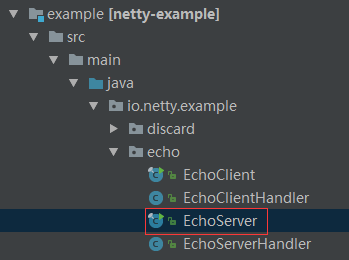

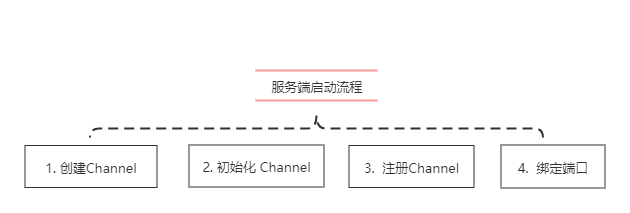
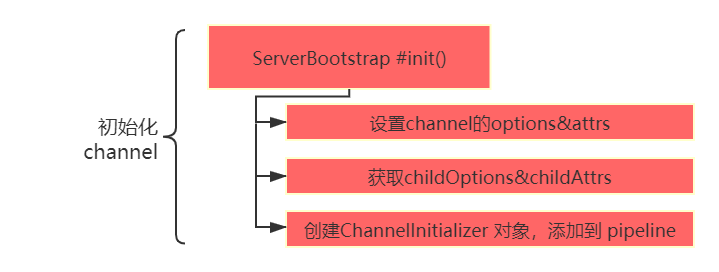
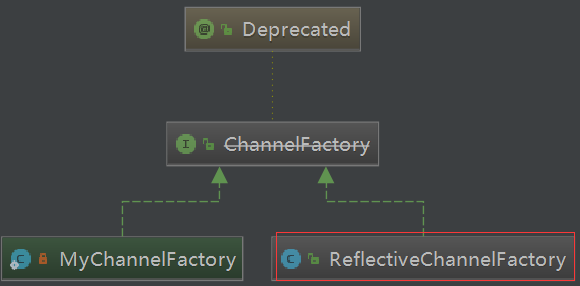
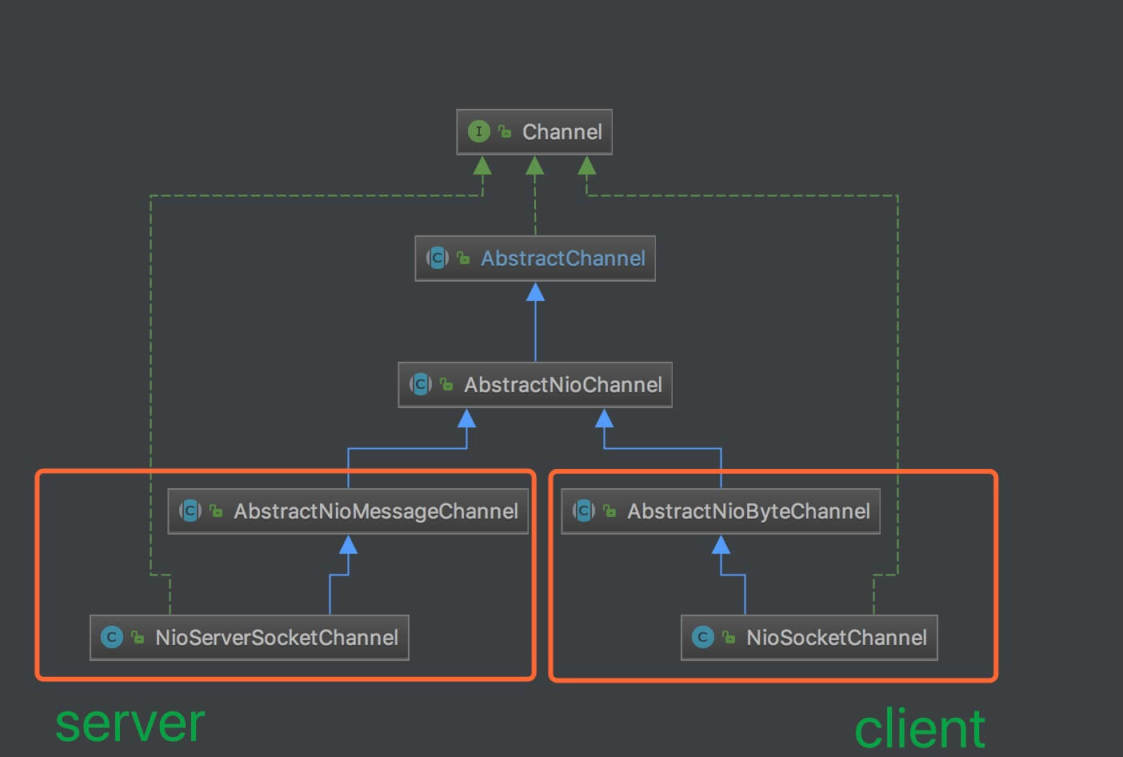




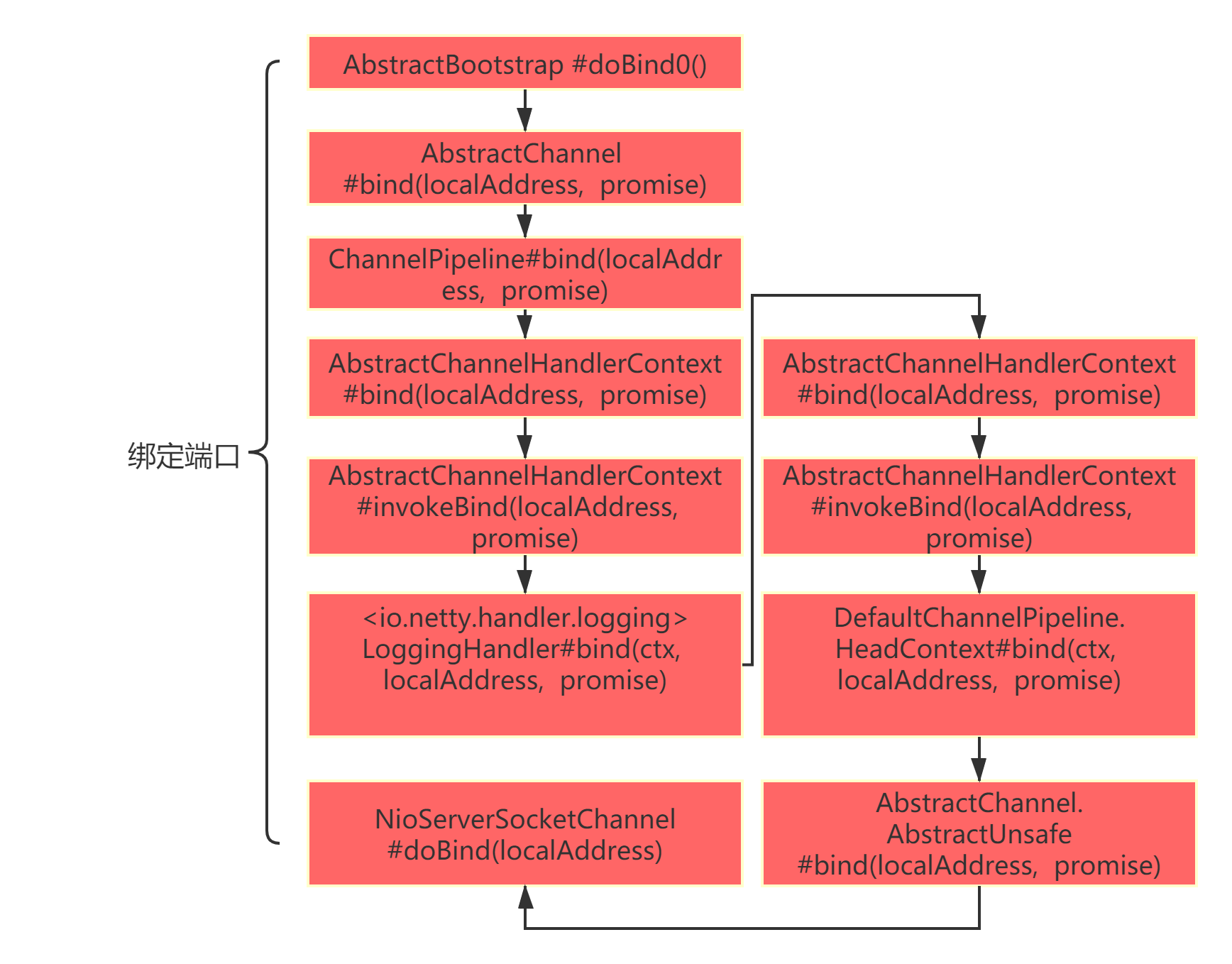

























评论